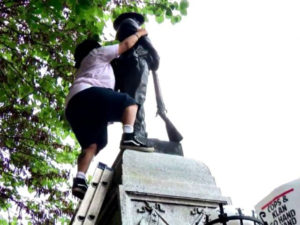by Jared Ware
In the wake of the white supremacist violence in Charlottesville, the left’s anti-fascist response to defend that community and the death of Heather Heyer, a rally that had been planned and organized over a two-year period by imprisoned people and the grassroots prison advocacy group IAMWE offered a powerful opportunity for those looking to actively confront white supremacy.
People all over the U.S. have responded to the violence of Charlottesville and the president’s defense of the white nationalist groups as morally equivalent to their anti-fascist opponents by taking direct action against Confederate statues, most prominently with Takiyah Thompson of the Workers World Party tearing down a confederate monument in Durham, North Carolina, this past week.
In times where rupture gives rise to direct action, an event with the word “march” might have seemed less urgent for the left than the radical possibilities that may have been available in their backyards. But Millions for Prisoners was much more than a march, and racist monuments are easier to destroy than the larger structures of white supremacy.

Although there was a brief march, the event was hardly another of the police friendly anti-Trump liberal marches we’ve grown so accustomed to in 2017. The majority of the event was a rally in front of the White House, featuring an amazing list of speakers including former Black Panther Party and Black Liberation Army members, a survivor of the MOVE bombing, socialists, members of the Central Park 5, activists, academics and prison abolitionists.
Their demand is the end of slavery in America – the elimination of the “exception clause” in the 13th Amendment which fatally caveats the abolition of slavery with the phrase, “except as a punishment for crime whereof the party shall have been duly convicted.”
“The 13th Amendment did not abolish slavery; it nationalized it,” Bennu Hannibal Ra-Sun recently explained in an article in the SF Bay View. As one of the members of the Free Alabama Movement, Bennu has faced intense repression from the Alabama Department of Corrections due to his involvement in the call and promotion of last year’s national prison labor strike against the practice of prison slavery.
As I write this, he has recently been moved to Limestone Correctional Facility, which is known by Alabama prisoners for its “Behavior Modification Program” and “Hot Bay Dorm” according to Brian Sonenstein’s reporting from last year.
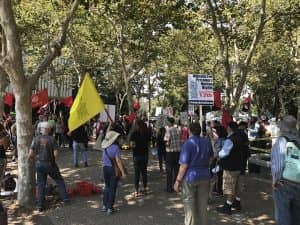
Back when incarcerated human rights advocates known as Jailhouse Laywers Speak called for the Millions for Prisoners Human Rights March, the notion that the exception clause of the 13th Amendment enabled a continuation of slavery was still a relatively controversial and obscure idea. One that at the time was primarily discussed within prison abolitionist circles and among some of those who had experienced it firsthand.
The role of the 13th as legitimizing a state-owned form of slavery was perhaps most prominent among members of, or those influenced by, the Black Panther Party and Black Liberation Army. In 1970, Black Panther Afeni Shakur, one of New York’s Panther 21 – who would later become mother to rap artist Tupac Shakur – penned a passionate essay from prison entitled “We Will Win.”
She stated poignantly within it, “We know that the 13th, 14th and 15th amendments did not liberate us – that they only legalized slavery and expanded the Dred Scott decision to include the Indians, Spanish speaking and poor whites.”

George Jackson famously referred to “neo-slavery” in the books he wrote in California’s prisons: “Soledad Brother” and “Blood in My Eye.”
Another member of the Black Panther Party, as well as the Black Liberation Army, Jalil Muntaqim – who is still incarcerated as a political prisoner – has written extensively on, and even tried to litigate against the 13th Amendment to challenge prison slavery practices. He faced repression just last year for teaching Black History and including a thorough examination of the 13th among students at New York’s Attica Prison.
However, the 13th Amendment’s exception clause and prison slavery are no longer solely being discussed from behind the walls by Black revolutionaries. Both issues have garnered a great deal more attention in the past 12 months.
In September 2016, a massive National Prison Labor Strike was launched by a coalition of organizations including the Free Alabama Movement, IWW’s Incarcerated Workers Organizing Committee (IWOC), Jailhouse Lawyers Speak and others that coincided with the 45th anniversary of the Attica rebellion.
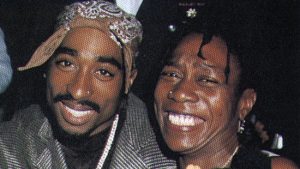
More notably to most Americans trained to ignore the protests of imprisoned people, Ava DuVernay released her Oscar nominated documentary “13th” during the prison strike, bringing the voices of prominent scholars and political pundits to the topic of the “exception clause,” lending it more mainstream credibility. There have been large class action lawsuits under anti-slavery laws against two private prison companies that gave large donations to – and have received massive contracts from – the Trump administration.
The issue also became a topic of mainstream discourse when a passage from a Hillary Clinton memoir was revealed online, showing that she endorsed and benefited from prison slavery during her time as First Lady in the Arkansas governor’s mansion.

To highlight how these touch-points are connecting with the growing radical and progressive left, Democratic Socialists of America – at the largest socialist organization gathering in decades – recently voted overwhelmingly to officially add prison abolition to their platform.
So what did the growing anti-fascist, anti-racist and anti-capitalist movements like those who defended Charlottesville against literal nazis and their white nationalist allies stand to gain from attending a rally against prison slavery?
Uhuru, one of the incarcerated supporters of Millions for Prisoners, described it as “a coalition that is placing resistance in the form of direct action back into the prison resistance movement.”
He noted: “During the Black Power era, prison resistance was connected to the political resistance outside – unlike now, when prison issues are viewed as distinct from outside political actions.
“By recognizing outside and inside actions as connected, strength is given to any actions. It brings the movement back full circle. The combination has the potential to disrupt all normal functioning that is government related and contributes to the people’s oppression.”
Uhuru spoke further of the radical possibilities, noting that potential is to have “the best minds inside and out at the same table strategically planning. This has always been a major fear of the establishment.”

“Today our Prison Movement brings fears because it’s the worst nightmare for the powerful in government. Prisons are where your poorest and most abused are. It is also where some of the most revolutionary minds are. These minds inside being connected to the larger movement outside guarantees to bring new energy to challenge fascism and white dominance in this country.”
“The energy in the prisons against examples like Trump have been incubating in Amerikkkan gulags for decades. Marching and protesting with the Millions for Prisoners is about so much more: education, reintroduction of the Prison Movement and uniting groups that can move in one direction towards abolition of the Prison Industrial Slave Complex. One of our first moves in the process to abolition is to unite to amend the 13th Amendment. ‘Smash capitalism’ is my cry!” says Uhuru.
Dee from Jailhouse Lawyers Speak believes “the possibilities are endless.”
“We must undermine this system in order to bring it to its knees. That cannot be done from one side; it’s going to take both sides. The sooner we recognize the pigs, jails, courts are all the same the quicker we can get to real, more effective abolitionist work. And we should look even further beyond, to the abolition of capitalism and establishment of more equal based political system.”
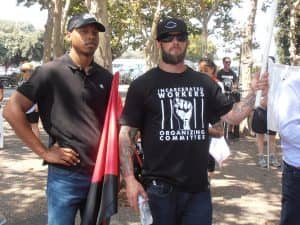
Failing to show solidarity for the anti-fascist, anti-capitalist and anti-racist movement against the 13th Amendment’s exception clause and the prison industrial complex also has its own substantial risks for the left, particularly in a climate where murderous fascists are facing less police repression than leftists who participated in direct action during inauguration day and seemingly in Durham this past week.
“For years, our radical movement has been too silent. They were intentionally pushed into the background by more reformist organizations. With the silence of these radical elements came decades of stiffer prison sentences and less resistance to what was obviously a cementing of the Prison Industrial Slave Complex,” explains Dwight G, who is imprisoned within the Georgia Department of Corrections.
Beyond the potential for solidarity beyond the walls, or even the radical potential for coordinated direct action that could shake the foundations of U.S. capitalism’s most brutally fascist manifestation, there is the critical and often missed opportunity to learn from members of the revolutionary left who have survived the crippling brutality of the most fascistic and white supremacist corners of the U.S.

I spoke to Dee from Jailhouse Lawyers Speak prior to the rally and he told me he looked forward to hearing from “Robert King and Ramona Africa. Robert due to his history in prison solitary units and prison organizing as a Black Panther Party member in the prisons. Ramona due to her history as a victim of a police bombing of their home, simply for their political beliefs.
“Her story shows the lengths the police will go to silence you by outright military bombings or frame ups in court actions.” Indeed it is not every day that one has the opportunity to see and hear from a MOVE house bombing survivor, Black Panthers like Robert King and Albert Woodfox of the Angola 3, former Black Liberation Army member Jihad Abdulmumit, or former Panther and author Mumia Abu-Jamal who had pre-recorded a message for the rally from inside Pennsylvania’s Mahanoy prison. Furthermore, these figures from the radical left of the ‘60s and ‘70s are not getting any younger and these opportunities won’t be available for many more years.
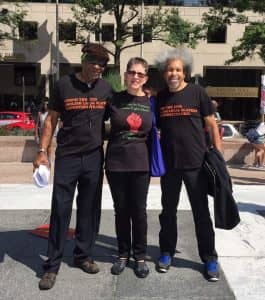
Dee also noted that he was “anxious to hear the Central Park 5 speak,” adding, “All of these individuals’ situations show the web of white supremacists’ actions through the judicial system – a beast that has of yet to be slain.”
It was not easy for incarcerated people to organize an event to bring together radical people on the outside and give them an opportunity to network and build more power toward the radical possibilities of prison abolition. Krystal Rountree and IAMWE provided incredible grassroots leadership to bring this vision to Washington, D.C., without the support of corporate sponsors or non-profits that sought to water down its mission. It was an event that connected people fighting against not just prisons, but the white supremacy, capitalism and imperialism that make America’s prisons the world’s most populated.
For it is a beautiful act of insurgency to smash a monument to a man who fought to defend slavery, but to abolish slavery in our time would be truly revolutionary.
Jared Ware is a freelance writer and human rights advocate. He produces the Beyond Prisons Podcast (https://shadowproof.com/category/prison-protest/beyond-prisons/) and can be reached on Twitter, @jaybeware, or email, jaybeware@gmail.com.





